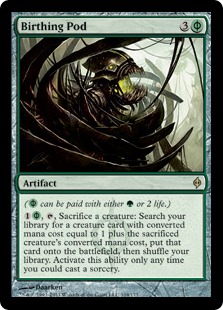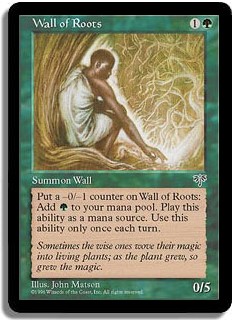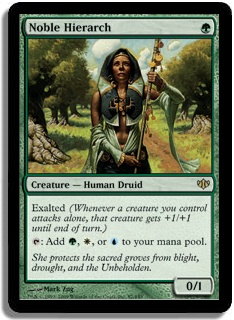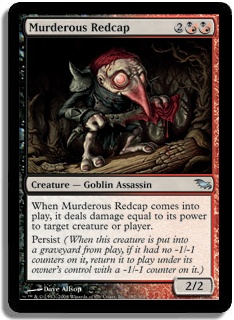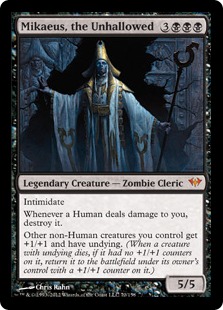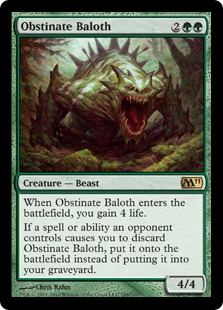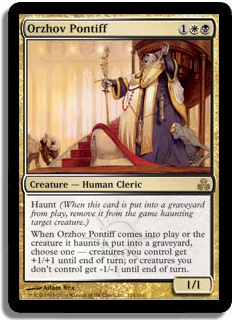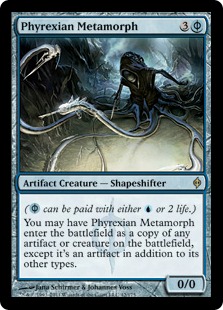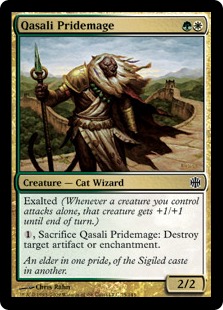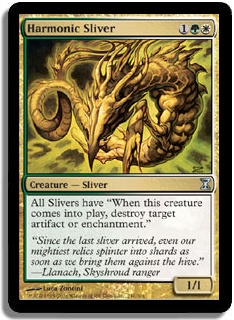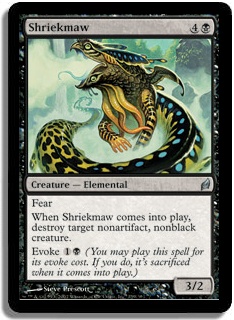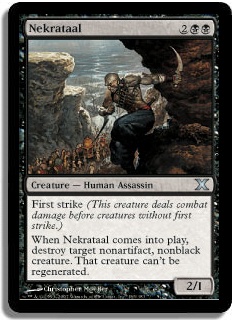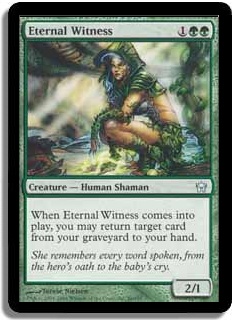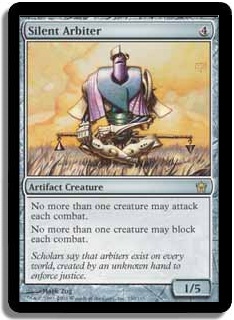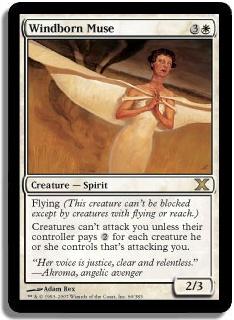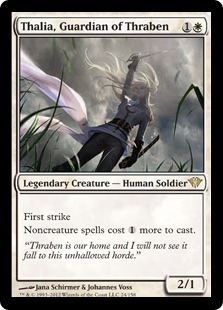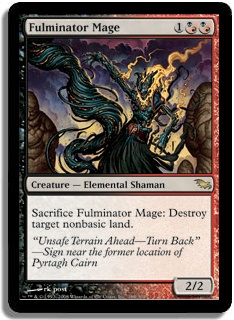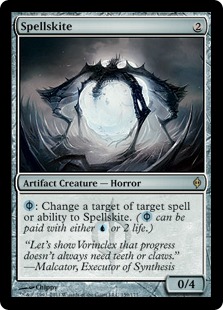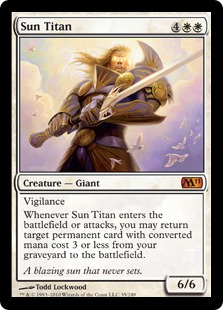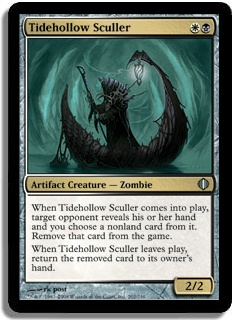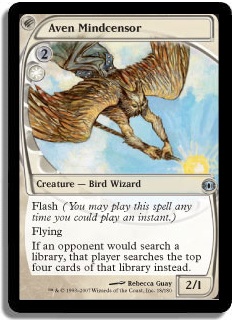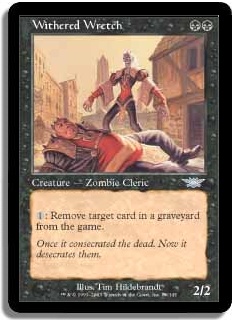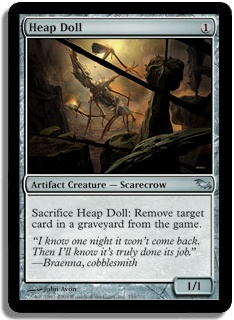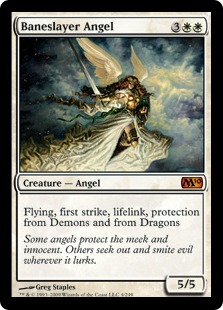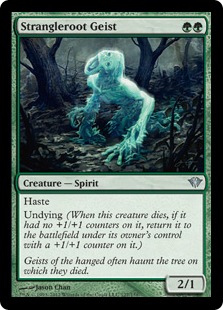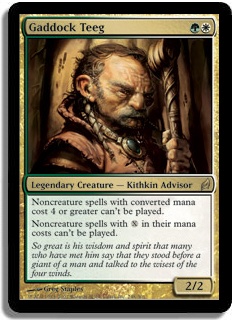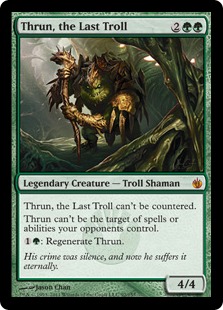I love to brew, and I love finding interactions that aren’t being currently exploited. That being said, one of the ways I find these interactions is by playing tier one decks. By playing the popular and powerful decks you can learn a lot about a format and find the best ways to attack it. Sometimes one of these tier one decks is really good, and I just keep playing it. Last year I won a PTQ with Caw-Blade in Standard. It’s not that I didn’t try to build new decks, but Caw-Blade was too good not to play.
My last article was all about my PTQ-winning Gifts deck. I was all set to play Melira in that tournament, as I’d spent a lot of time playing and thinking about it. In my opinion, Melira is one of the most complicated tier one decks in the history of Magic as far as deckbuilding goes. There are so many options, and with so much Tutoring (in the form of Birthing Pod and Chord of Calling), all of the card choices you make will impact most of the games you play. I think I’ve made a lot of progress in understanding this deck, and I wanted to pass on my knowledge to all of you.
This deck has a lot of things going for it. It plays great cards like Birds of Paradise and Kitchen Finks, not to mention Birthing Pod. Most Birthing Pod decks are great with their namesake in play, but this deck is truly absurd. If Pod resolves, you will pull a long way ahead with every activation. Turning Kitchen Finks into Ranger of Eos and then into Reveillark is more card advantage than any control deck can boast. It also enables your combo very effectively. Any of your fetch lands (as well as Ranger of Eos) can find Dryad Arbor, which in turn can be Podded into Viscera Seer. Any of the deck’s one-drops can be turned into a Melira, and Kitchen Finks can be turned into Murderous Redcap. Reveillark can return two of your combo pieces when it dies/leaves play, and Birthing Pod conveniently lets you sacrifice it.
Melira is really tricky to build. The biggest decision to make is whether to play Wall of Roots or Noble Hierarch. Both options definitely have merit. Wall of Roots synergizes really well with Chord of Calling as you can use it for both mana and convoke. Wall is great against aggro as Walls generally are, and it also reduces vulnerability to Pyroclasm and Jund Charm.
On the other hand, Noble Hierarch lets you play a lot more turn 2 Kitchen Finks and Birthing Pods—hands with a Birds or a Hierarch are better than those without. Hierarch taps for white mana, which turns out to be more relevant than I would’ve thought. It’s also significantly better at beating down. In a lot of matchups, especially post-board, this deck attacks for the win. If they have a couple of counters or a bit of spot removal it’s pretty hard to assemble your three-card combo win. The ability to get a bunch of extra damage early in the game changes the way your opponent has to play. If they have to worry about your beatdown as well as your combo they’re worse at dealing with either.
As you can tell from the above list, I decided to go with Hierarch. I think that Melira is pretty good against aggro, and I wasn’t expecting too many sweepers.
The next decision to make is how many Gavony Townships to play. I love this card for its ability to turn any awkward-looking army into a face-beating machine. I think Melira is perfect for this as you have a lot of cheap creatures that aren’t great at beating down on their own. Township also synergizes with persist creatures. Noble Hierarch’s ability to tap for white mana increases your chances of paying for the Township activation. Your mana is better in general, meaning you can afford to play more colorless lands.
I would love to play four Townships, but common sense prevails. Playing more Townships also means you can play more combo pieces. Both Viscera Seer and Melira are dorky, but they’re cheap and Township turns them into actual threats. Without Township you really don’t want to draw multiple Seers.
The other key decision revolves around the Tutor targets. With both Chord of Calling and Birthing Pod you have the ability to find any given creature in your deck with a large amount of consistency. This in turn means you can afford to play a range of matchup or situation-specific creatures. The amount of space you have for these cards depends on how many combo pieces that you have chosen to play.
In a list with four of each Seer and Melira, you don’t have as much space for these sorts of cards. You’re obviously playing a Reveillark and a Ranger of Eos, but a lot of the one-ofs are matchup specific and the ones you don’t play main will often be useful in your sideboard. This list is going to be exhaustive, but I have no doubt that I’ll overlook some. With so many options, it’s very difficult to know which to play in the main or side and which to not include at all.
You’re obviously going to play at least one of Murderous Redcap, but you might find that you want more. There are matchups where it’s great to draw Redcap, and being able to play this on turn 3 and kill a Dark Confidant or Delver of Secrets feels awesome. Playing more of these increases your total number of combo pieces and this is good if you’re racing, but it also means you can kill them if they’ve exiled one of these already. I wouldn’t play more than one unless I thought it was going to be good to draw—even if you’re not comboing.Â
Entomber Exarch functions as a more versatile Tidehollow Sculler or Eternal Witness, but it’s less effective and efficient than either. I’m not a fan of this card in this deck.
Mikaeus, the Unhallowed is something that became popular after a Melira list playing one made the Top 8 at GP Lincoln. It functions essentially as an additional Melira by giving your persist creatures undying. Being able to combo kill in the mirror when they have a Melira in play is nice but unlikely to arise. Letting your Kitchen Finks survive through an Elesh Norn, Grand Cenobite so that you can turn it into a Phyrexian Metamorph is another minor benefit. That being said, I tried it for quite a while but felt like I didn’t need it.
Obstinate Baloth is my favorite sideboard card in Modern against both Jund and various other aggressive decks. You don’t really want it main, but you definitely want multiple in the sideboard.
I’ve gone back and forth on Orzhov Pontiff more times than I can count. It’s great in the mirror, it sweeps assorted tokens from Empty the Warrens and Lingering Souls, and it also kills Dark Confidants and Delvers. With a sac outlet you can also use it twice in one turn. I want this maindeck, but it won’t be the end of the world if it ends up in the sideboard.
Phyrexian Metamorph does everything. It can be a Birthing Pod, it can kill opposing legends, and if it copies a creature with persist it can come back as just about anything in play. I once persisted it as an Expedition Map which fetched Gavony Township allowing me to swing for exactly lethal. If you play Strangleroot Geist, it also gives you a different combo kill when combined with a persist creature and a Viscera Seer. I can’t imagine playing Melira without this maindeck.
Qasali Pridemage and Harmonic Sliver compete for the same slot, and I’m very confident that you want at least one main. Qasali Pridemage narrowly gets the tick for a couple of reasons. With Noble Hierarch instead of Wall of Roots you don’t have many two-drops that you want to Pod away. Pridemage is also good against Splinter Twin where the Sliver is not. On the other hand, the Sliver is better to Pod through, and it can destroy Damping Matrix which completely shuts you down.
Shriekmaw and Nekrataal allow you to kill Elesh Norn as well as a lot of other annoying threats. That being said, Redcap takes care of most small creatures and Metamorph kills legends. There really aren’t that many other creatures that have to die. If you’re planning on winning the game by attacking then these are great, but I don’t think it’s necessary to have one maindeck. I think Nekrataal gets the nod if you are deciding between the two, as it’s cheaper in terms of both Chord and Pod.
Eternal Witness is an obvious inclusion in a Birthing Pod deck (or so I thought). It took me a lot of games to realize that I didn’t really want nor need it. When you draw it, it usually returns a land and it’s rare that you want to Pod into it instead of Finks. With Reveillark returning the important things to play, I don’t think you need this at all.
Linvala, Keeper of Silence, like Orzhov Pontiff, is excellent against a lot of different creatures. Twin can’t combo you, and it turns off heaps of different cards in the mirror as well as against Knight of the Reliquary decks like Through the Breach/Summoning Trap. Whether you play this maindeck depends on which other cards you’re playing for the mirror and Twin and how prevalent you expect those decks to be.
Silent Arbiter and Windborn Muse are less versatile answers to Twin but are better against Empty the Warrens. I think Silent Arbiter is a lot better than Muse as it doesn’t die to Flame Slash, but I also think both are too narrow to include.
Ethersworn Canonist is awesome against Storm. Most Storm decks have no way to deal with it maindeck, and since the matchup is otherwise unfavorable due to their speed I like to have access to one of these maindeck.
Thalia, Guardian of Thraben is also great against Storm, but less so in game 1 as they can kill it with Grapeshot. Post-board they have answers for Canonist in the forms of Echoing Truth and Lightning Bolt. In the meantime, Thalia makes it harder for them to find these answers whilst making it near impossible for them to go off through it. Thalia is also better than Canonist as the Storm player will board into the Twin combo.
Fulminator Mage is good against Tron, Windbrisk Heights, and manlands, but it’s more of a sideboard card.
Kataki, War’s Wage is your way to hose Affinity, and it does a pretty sweet job. Once again it’s more of a sideboard option.
Spellskite is great against Twin combo while also protecting your fragile combo pieces. I love this card main as it’s even good against burn spells.
Sun Titan is a great way to “GO BIG.” Being able to Pod a Reveillark into Titan is taking value to a whole other level. It’s fine to draw it as you can usually get to six mana, at which point it will always return something. Going big is a good idea if you expect to face a lot of decks like Jund.
Tidehollow Sculler allows you to fit disruption into your Tutor-heavy deck. It’s never great, but if you really need to remove something from their hand you can always sacrifice it to a Viscera Seer in response to the trigger. It’s also quite handy at finding out what disruption they have. I’ve played this a lot and I’ve liked it, but at the moment it just doesn’t quite make the cut.
Aven Mindcensor is my favorite card for the mirror. Countering a fetchland is good, but countering a Chord of Calling or Birthing Pod activation is just awesome. They’ll also struggle to kill it as it’s hard to find a Murderous Redcap when you can’t really Tutor. Against fetchlands it’s not the best as their important ones have already been used before you can get this into play. But against decks playing cards like Knight of the Reliquary or Gifts Ungiven, as well as the cards I mentioned in the mirror, Aven Mindcensor is an all-star. I’d like to fit it in the main, but it never makes the cut so I’ve become content with it being an awesome sideboard option.
Withered Wretch and Heap Doll are obviously your Tutorable graveyard hate options. Heap Doll is the best at countering Unburial Rites and against persist creatures, while Withered Wretch is a lot slower but can dominate a game against Loam or Dredge. If I were to play one of these it would be Wretch, but neither is likely to make my 75 unless I expect a lot of the lesser-played decks that it’s great against.
Wurmcoil Engine and Baneslayer Angel are like Sun Titan in their ability to outmuscle aggressive and midrange decks. Baneslayer is the best if they don’t have much removal, but you want this slot to be good if they do so Wurmcoil gets my vote. Both are better than Sun Titan against Jund but worse if you are ever plan to combo them. I wouldn’t play one of these main, but I think they’re great sideboard options.
Strangleroot Geist is something I’ve been meaning to try since I switched to the Noble Hierarch version. In theory it’s great at allowing you to Pod a one-drop into a value card and then continue up the chain. As I mentioned with Phyrexian Metamorph, it also gives you another combo option.
Gaddock Teeg prevents you from casting Chord or Pod, and decks that it’s good against usually have access to removal for it. I’ve seen it in a couple of lists, but I really don’t like it.
Thrun, the Last Troll is yet another anti-Jund and Control option. I don’t like this one as much as it doesn’t dominate the board. The regeneration is good but you have persist creatures, Reveillark, and Wurmcoil for that, and the fact that it can’t be countered is mitigated by you only playing one.
The sideboard contains a lot of the one-ofs discussed above as well as multiple Baloths. The hardest thing for the deck to overcome is a Grafdigger’s Cage. It turns off Kitchen Finks, Murderous Redcap, Chord of Calling, and Birthing Pod. You can’t even fetch Dryad Arbor with a fetchland. I’ve spent a long time trying to work out the correct strategy against it, and it’s complicated by the decks that can board it in. There are a lot of decks that Cage is ok against, and these decks are very unlikely to have it in their sideboard. The decks that can generally side Cage in are Twin, Tron, Jund, Affinity, and Summoning Trap. There’s one card that’s fine or good against all of these decks whilst also being able to kill Cage, and that is Putrefy.
Creatures (30)
- 4 Birds of Paradise
- 1 Orzhov Pontiff
- 1 Reveillark
- 4 Kitchen Finks
- 2 Murderous Redcap
- 1 Ethersworn Canonist
- 1 Ranger of Eos
- 4 Noble Hierarch
- 1 Qasali Pridemage
- 1 Linvala, Keeper of Silence
- 4 Viscera Seer
- 1 Spellskite
- 1 Phyrexian Metamorph
- 4 Melira, Sylvok Outcast
Lands (22)
Spells (8)

I think Melira is a great deck that definitely rewards you for the time you put into it. If you like the look of the deck, I suggest you get a lot of games in before you judge it. There are so many decisions, and you can be punished hard for not making a good one. If you play this deck well I think you’ll see excellent results.
As always, thanks for reading, and I look forward to responding to your comments.
Sledgesliver on Magic Online

